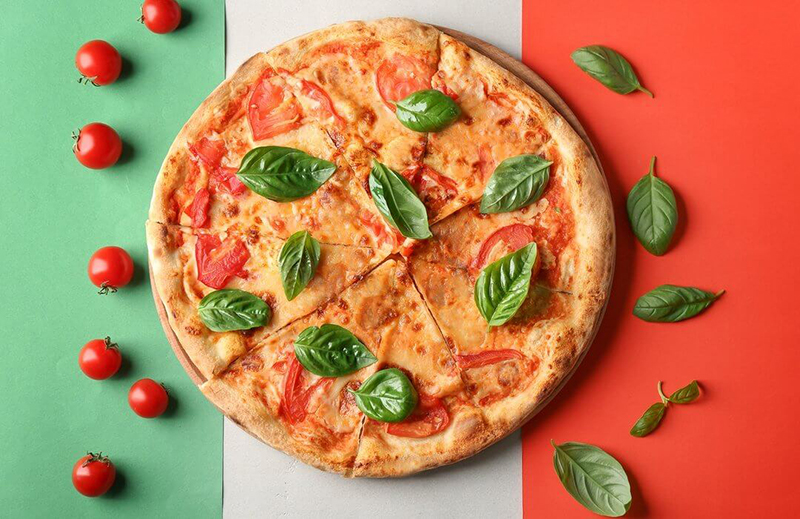
Italian food is a unique, mouthwatering culinary world full of flavor, personality, and a certain je ne sais quoi. Have you ever stopped to consider the stories behind some of the dishes that have become staples of our tables? If not, it's time to start!
Today we're taking you on a journey through history and across Italy to explore the origins of some of the most iconic Italian dishes. From Risotto Milanese to Osso Buco, discover how these traditional recipes came to be—and why we still savor them today.
Italy's traditional recipes are an integral part of the country's culture; these dishes are deeply rooted in its past and have been passed down from generation to generation. So come along with us as we explore Italy’s edible history and discover more about some of its signature dishes!
Risotto Milanese: Saffron Infused Rice From Milan
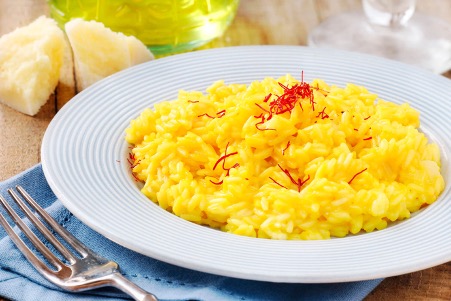
Risotto Milanese is an Italian classic you may already be familiar with. This creamy and fragrant saffron-infused rice dish hails from the Lombardy region of Italy, and it's been around since the 16th century. It's said that risotto originated in Milan as a dish for local farmers – at the time, they had access to all the necessary ingredients to prepare the dish, most notably saffron.
The unique color and flavor of risotto Milanese comes from the saffron spice, which was first brought over by traders in Venice during the Middle Ages.
Apart from its flavor profile, this traditional Italian dish also has some interesting history behind it—according to legend, it was served during a banquet for a royal wedding between Francesco Sforza and Bianca Maria Visconti!
All in all, risotto Milanese is a great example of how centuries-old recipes are still enjoyed today all over Italy – a testament to the country's deep culinary roots!
Pasta Carbonara: A Roman Dish Dating Back to World War 2
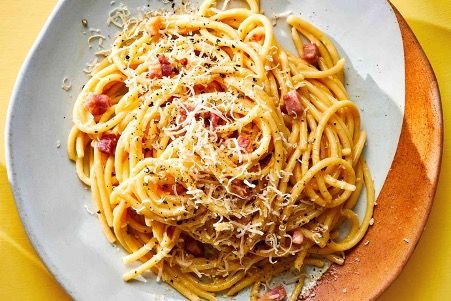
For Italian cuisine fans, Pasta Carbonara is an absolute winner. Dating back to World War II and the American occupational forces stationed in Rome, this dish is a classic example of how Italian cuisine has adapted over time.
The combination of eggs and pancetta – usually served spooned over spaghetti – results in a creamy and rich sauce that's hearty enough to satisfy even the pickiest eaters.
The dish was created out of necessity when the US Army was stationed in Rome, combining ingredients like eggs and pancetta which were readily available at the time. With this classic dish, Italians have been able to create something truly memorable from limited resources – a real testament to their culinary genius!
Pasta Carbonara is proof that traditional Italian dishes can have a story behind them – showing how they've developed over time while still remaining true to their original form.
Pizza Napoletana: Originating From Naples, Now World Famous

Ah yes, pizza napoletana—the beloved Italian staple that we all know and love. Did you know that it has a super interesting history? It hails from the city of Naples (hence the name) and is thought to have originated in the 18th century! It was actually even referred to as "pizza" back then, and could be found along the streets of Naples, with vendors selling it from wooden crates.
So why is this dish so famous today?
Ingredients
It all comes down to the ingredients. Pizza Napoletana combines a simple dough made from flour, water, salt and yeast - and then topped with tomato sauce, mozzarella cheese, olive oil, basil and oregano. These ingredients are locally sourced in Italy, so you know you're getting the freshest possible flavors!
Preparation
The preparation process of this dish is also pretty special. Traditionally it's cooked in a wood-fired oven at very high temperatures—this creates a unique texture and aroma which has kept us coming back for more over the years. Plus it only takes around 90 seconds to cook - so no need to wait around for your pizza!
Although this dish has been around since the 18th century - its popularity is still going strong! So if you're ever feeling hungry - why not try out pizza Napoletana for yourself?
Parmigiana Melanzane: Eggplant Dish Popular in Southern Italy
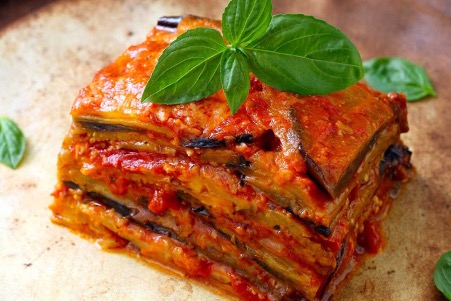
Parmigiana Melanzane is a staple dish in Southern Italy, consisting of eggplant slices layered with cheese, tomato sauce and parmesan and baked to perfection. This flavorful dish is the perfect balance of savory and salty, with just the right amount of crunch.
It's thought that this delicious dish has Arabian origins. It's believed to have been introduced to Sicily during the Arab occupation in the 9th century, then slowly made its way throughout the Italian peninsula.
A Matter of Taste
What makes Parmigiana Melanzane so special? It's all down to the combination of flavors—the delectable eggplant combined with layers of melted mozzarella cheese and oregano-infused tomato sauce make it a dish that could tantalize even the pickiest eater.
The dough is also worth noting: it's made from a combination of flour, water, eggs and sugar, giving it that signature light and crunchy texture. To top it off, there's also parmesan cheese sprinkled over each slice for an extra salty kick.
Three Steps To Success
The best part? Making Parmigiana Melanzane at home is easy enough! All you need to do is follow three simple steps:
Whether you're a beginner chef or an experienced cook, this traditional Italian dish is sure to please—just don't forget to season it with some freshly
Osso Buco: Braised Veal Shanks, a Specialty of Milan
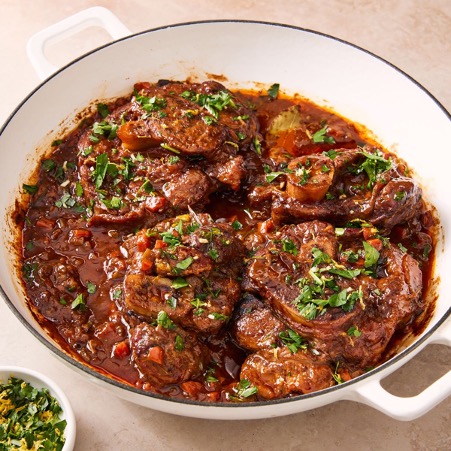
If you're a fan of Italian cuisine, then Osso Buco is likely a dish that you enjoy. This traditional Italian classic from Milan is a delectablemeaty dish, slow-cooked to perfection.
So why is Osso Buco so popular? Well, for starters it's incredibly flavorful—braised veal shanks are cooked together with white wine, stock and vegetables like onions, celery and carrots until the meat is tender and succulent, then served on a mound of saffron risotto. Yum!
But there's more to Osso Buco than meets the eye. Its history dates all the way back to the 18th century when it was created by peasants in Lombardy. The name itself comes from the combination of two Italian words: “osso” which means bone” and “buco” which means “hole”—the marrow middle of the veal shank was traditionally filled with other ingredients and sauces to add flavor!
Today, this delicious dish has become one of Italy's most beloved specialties. If you haven't tried Osso Buco yet—what are you waiting for?
Tiramisu: The Espresso-Soaked Dessert Created in Treviso

Ah, the deliciousness that is Tiramisu—the espresso-soaked dessert created in Treviso. Who would have guessed this creamy, dreamy concoction would become one of Italy's most beloved desserts?
Let's get to the roots of this Italian classic and find out why it has been so popular for so many years.
Origin Story
The history of Tiramisu dates back to the 1960s in Treviso, North East Italy. According to legend, the owner of a restaurant in Treviso named Le Beccherie wanted to create a signature dish that would stand out in his menu. He mixed together ingredients he already had in his kitchen: ladyfingers soaked in espresso combined with a creamy blend of mascarpone cheese and eggs. The rest is history!
Classic Ingredients
As mentioned before, there are only a few essential ingredients needed for a classic Tiramisu: ladyfingers (or savoiardi) soaked in espresso, mascarpone cheese and eggs creates the fluffy whipped cream topping, sugar is added for sweetness, cocoa powder is sprinkled on top for texture and an espresso flavored liqueur gives it that extra kick!
Forget about overly sweet cakes or sugary pastries–Tiramisu is just right when you're looking for something perfectly balanced between rich flavors and subtle sweetness. In Italy, it's often served as a shared dessert at special occasions like weddings or anniversaries. So if you ever find yourself in Italy, make sure you don't miss out on trying this Italian classic!
Conclusion
Italian cuisine is a historic and rich part of the Italian culture and a source of pride for Italians all over the globe. From the classic risotto to the delicious osso buco, Italy's culinary heritage is a reflection of its vibrant culture, tradition and history.
Whether trying to trace the origins of Italian dishes or simply looking for new and delicious food, these classic dishes are sure to satisfy. From a rich earthy flavor to a classic light and simple broth, there's something to delight everyone's palate. So treat yourself and take a journey into the delicious world of Italian cuisine. Saluti e Buon Appetito!